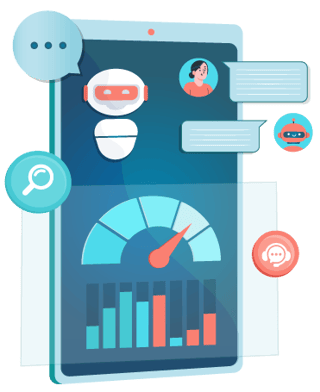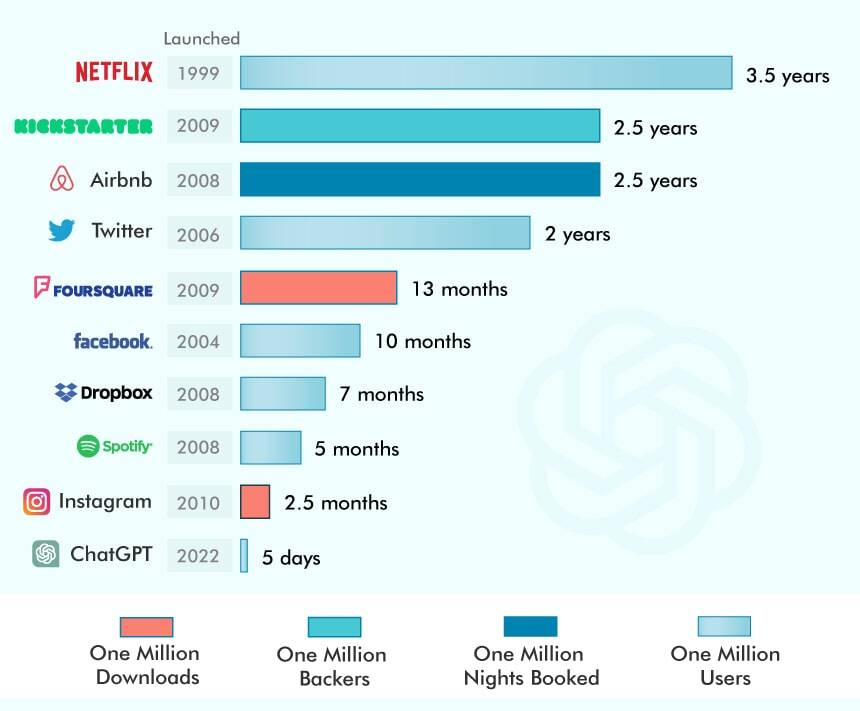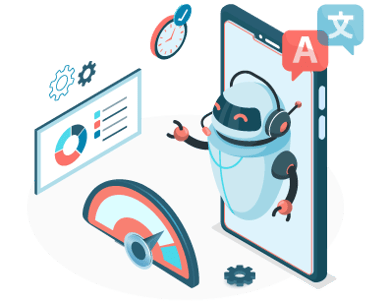
In today's digital landscape, conversational chatbots play a significant role in enhancing user experiences, streamlining customer support, and driving business growth. However, as the complexity and user base of these platforms increase, ensuring optimal performance under varying conditions becomes crucial.
Current market trends include the integration of chatbots with voice assistants in the domains of eCommerce and retail. Additionally, the implementation of these technologies has gained traction in the fields of healthcare and education. The conversational chatbot platform market is expected to continue its growth trajectory with a 24% CAGR. Due to the increase in its demand, it is important to ensure its performance efficiency through proper performance testing.
In this expert series, we would be discussing how to plan performance testing of Conversational Chatbot applications and what KPIs to be considered for better performance.
Time Taken by Online Services To Reach One Million Users

Source: Statista
Conversational Chatbot Performance Architecture
Conversational chatbots are typically composed of various components. Below are some common elements that are typically included in a conversational chatbot performance architecture:
- User Interface: It provides the interface for users to interact with the chatbot.
- Natural Language Processing (NLP): It enables the chatbot to understand user input and generate appropriate responses.
- Backend Services: These include the servers, databases, and APIs that power the chatbot's functionality.
- Integration Framework: It enables the chatbot to integrate with other third-party services and other applications.
- Machine Learning (ML): This enables the chatbot to continuously learn and improve its responses based on user interactions.
- Performance Monitoring: It enables the chatbot to monitor performance metrics like response time, error rate, and user satisfaction. It can include tools like APM (Application Performance Management) and Analytics Dashboards.

KPIs for Conversational Chatbot Application Performance
When evaluating the performance of a conversational chatbot application, there are several key performance indicators (KPIs) that can be used to measure its effectiveness. Below are some KPIs that can be used to identify the performance of the Conversational Chatbot application:
-
Mean Time To Failure (MTTF)
This is the average time that passes between two consecutive failures of the chatbot measured by (MTTF).
-
Mean Time To Recovery(MTTR)
It is the mean time the chatbot takes to recover from a failure and resume regular operations.
-
Concurrent User Capacity
The maximum number of users who can engage with the chatbot simultaneously without significantly affecting its performance is measured by this metric.
-
Scalability
It measures the chatbot's ability to handle increasing user loads without significant performance degradation.
-
Response Time
It is the amount of time the chatbot needs to respond to the user's message.
-
Throughput
It measures the number of transactions a chatbot can handle in a certain amount of time.
-
Error Rate
This metric is used to track failed and irrelevant responses to user requests.
-
Resource Utilization on the Client Side
It is used to assess the system resources from where the user is accessing and uploads the data to the Chatbot application.
Key Scenarios for Testing the Performance
The performance of conversational chatbots can involve evaluating various scenarios to ensure that the chatbot can handle different types of conversations and user interactions. Below are some key scenarios for testing the performance of conversational chatbots that are followed by the QASource team:
- Process concurrent requests from different channels like web, mobile, or social media
- Support long-running conversations
- Response time between user message and server response
- Integration of APIs should be covered in the performance scenario
- Different network bandwidth usage of the application
- Response time of NLP engine with different types & sizes of user inputs, including text, photos, videos, and voice
Best Practices for Conversational Chatbot Performance Testing
Below are the some best practices that are followed by the QASource team while doing performance testing for conversational chatbot applications:
- Identify the performance goals and requirements, including response time, concurrent user capacity, and resource use.
- Develop test scenarios that are typical and anticipated usage by the end-user.
- Test with a variety of devices and network conditions.
- Monitor important performance indicators using continuous monitoring tools.
- Test with tool configuration settings, different languages, fonts, colors, etc.

Conclusion
A well-defined performance testing strategy, coupled with the right tools, can ensure high-quality chatbots and satisfied customers. Given the diverse audience and different goals, chatbots must undergo extensive load testing to handle heavy traffic. You can conduct performance testing of chatbots with the help of above mentioned best practices. But to get the best results, you must partner with a professional software testing company such as QASource. Visit QASource now and learn how you can enhance your chatbot testing process.
Have Suggestions?
We would love to hear your feedback, questions, comments and suggestions. This will help us to make us better and more useful next time.
Share your thoughts and ideas at knowledgecenter@qasource.com